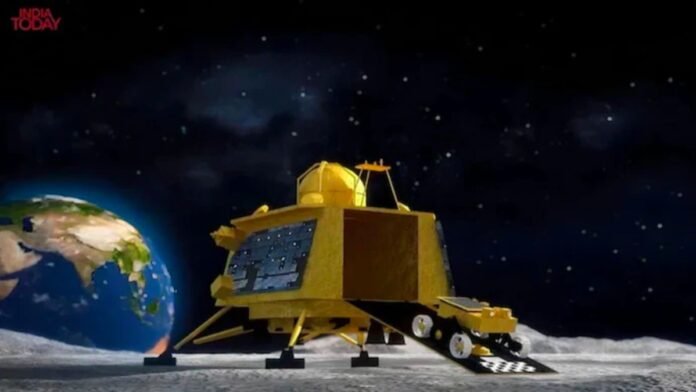Chandrayaan-3 landed on the moon, on August 23, Wednesday. The Satish Dhawan Space Center in Sriharikota, Andhra Pradesh, launched Chandrayaan-3 on July 14, 2023. In 40 days, it reached the Moon.
India was the first nation to soft-land a spacecraft near the Moon’s South Pole and the fourth to land on the Moon.
The Pragyaan rover was freed from the Vikram lander early Thursday morning and began investigating lunar rocks and craters. The rover has cameras, spectrometers, and a drill for scientific study.
The Vikram lander and Pragyaan rover will spend one lunar day—14 days on Earth—exploring the Moon. The current lunar day starts August 23. The rover and lander’s scientific instruments will study the Moon’s geology, water resources, and suitability for human exploration.
The lander and rover are solar-powered. The Moon spends 14–15 Earth days at darkness after 14 Earth days. The temperature will be -180c. Therefore, neither the Pragyan rover nor the Vikram lander can operate on the moon.
Scientists believe the mission might endure longer and resuscitate when exposed to sunshine. Isro chairman S. Somanath said the rover might continue its mission if the systems last till the next lunar day. This won’t be known until Isro scientists evaluate the lander and rover’s systems after the lunar night.
The Terrain Mapping Camera (TMC) on the lander will map the landing site in 3D. For Moon distances, the Laser Retro-reflector Array (LRRR) reflects laser pulses from the planet. Lunar Exploration Rover (VIL) will research and explore. The Orbiter High-Resolution Camera will take high-resolution Moon photos. Moon Impact Probe (MIP) will leave a crater on the Moon’s surface to reveal its subsurface.
The Alpha Particle X-ray Spectrometer will identify lunar soil chemicals. A Panoramic Camera will capture the rover’s surroundings. Laser-Induced Breakdown Spectroscopy (LIBS) will identify the lunar surface’s chemical makeup by examining laser light.
Chandrayaan-3 is not meant to return to Earth. The tools will stay on the Moon after exploration.
Conclusion:-
Chandrayaan-3 landed on the Moon on August 23, 2023. Satish Dhawan Space Center in Sriharikota, Andhra Pradesh, began the 40-day Moon mission. The Pragyaan rover will use cameras, spectrometers, and a drill to examine the moon. The Vikram lander and rover will spend one lunar day studying the Moon’s geology, water resources, and human exploration. Solar-powered expedition will go until the next lunar day, with the rover possibly continuing if systems survive the night. The Terrain Mapping Camera, Laser Retro-reflector Array, Lunar Exploration Rover, Orbiter High-Resolution Camera, Moon Impact Probe, Alpha Particle X-ray Spectrometer, Panoramic Camera, and Laser Induced Breakdown Spectroscopy will be used. The tools will stay on the Moon after exploration.



